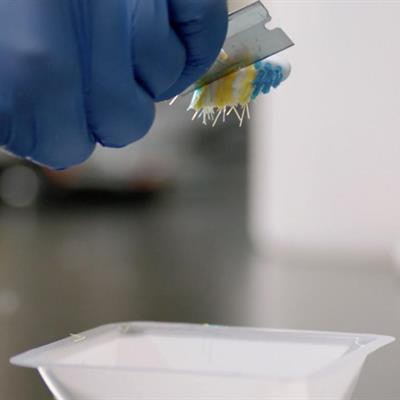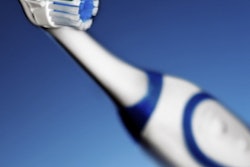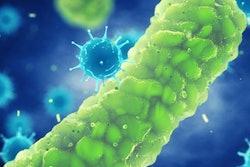
What's on your toothbrush? Mostly just bacteria from your mouth, according to a study published on January 31 in Microbiome. The types of bacteria living on toothbrushes reflect microbes commonly found in the oral cavity and on the skin -- and not in the surrounding environment.
Toothbrushes used by those who kept up with their daily oral hygiene habits had less-diverse bacteria on their surfaces, the authors found. Most of the microbes found on the bristles of toothbrushes likely came from the users' mouths instead of from their guts. The brushes were also mostly free of bacteria from other environmental factors, such as dust or germ-containing aerosols generated by flushing a toilet with the lid up.
"The microbial communities on toothbrushes are composed of dominant oral-derived taxa in combination with more versatile environmental strains," wrote the group, led by Ryan Blaustein, PhD, of the National Human Genome Research Institute at the U.S. National Institutes of Health (NIH).
Used toothbrushes are known to collect a mixture of assumed human-derived and environmental bacteria, including Streptococcus, Staphylococcus, Lactobacillus, Klebsiella, and Enterococcus. A number of factors can affect bacteria's ability to colonize on a toothbrush, including whether a toothbrush is rinsed with water regularly, experiences temperature variations, and is stored on different types of surfaces.
 A researcher removes bristles from a toothbrush to test them for bacteria. Image courtesy of Northwestern University/Big Ten Network.
A researcher removes bristles from a toothbrush to test them for bacteria. Image courtesy of Northwestern University/Big Ten Network.Aside from a limited understanding that antimicrobials incorporated into oral care products influence bacterial counts on toothbrushes, the factors that more broadly affect the toothbrush microbiome are not well understood. To get a better sense of toothbrush bacteria, the researchers asked adults up to age 65 and living within a 100-mile radius of Northwestern University to donate their used toothbrushes for microbiome analysis. They also asked participants about their demographics, dental habits, and diet.
Blaustein and colleagues received 34 toothbrush samples with corresponding data. The authors extracted DNA from the bristles to examine the microbial communities found there. The data were compared to those listed in the NIH's Human Microbiome Project, which aims to identify and catalog microbial flora from different human body parts.
More than 75% of samples included eight predominant species that often are present in oral microbiomes, including Streptococcus, Rothia, and Veillonella. The majority of samples also had two species with more likely environmental origins, Klebsiella oxytoca and Stenotrophomonas maltophilia.
In at least half of samples, the authors found 37 relatively conserved bacterial species. Of those, about 81% are common within the oral microbiome.
Other human-linked microbial species included strains from Actinomyces, Corynebacterium, and Prevotella, according to the findings. Many of these strains can be found across multiple body sites, although they occur most often in oral microbiomes.
Additionally, better oral hygiene, regular flossing, and mouthwash use were associated with toothbrushes that had less-diverse microbial communities. What's the conclusion? A cleaner mouth equals a cleaner toothbrush, the authors wrote.
"A complex combination of personal health, dental hygiene, and environmental variables likely shapes taxonomic diversity and antimicrobial resistance in toothbrush microbiomes," they added.




















